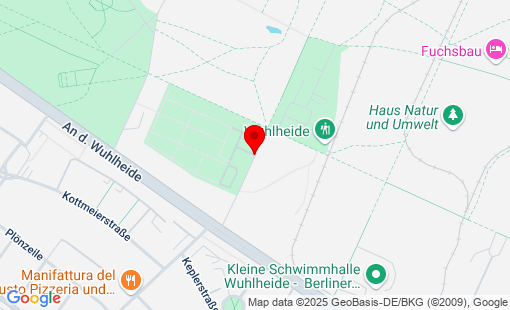Germany
Berlin-Köpenick, Waldfriedhof Oberschöneweide
Total Occupation: 1 fatality
Total Occupation: 1 fatality
The Oberschöneweide forest cemetery was laid out in 1902 on behalf of AEG co-founder Emil Rathenau as the "Kirchhof an der Waldstraße (im Eichgestell)" as a gift from the factory owner to the then rural community of Oberschöneweide. The 1-hectare cemetery was consecrated in February 1903. The cemetery chapel was built in 1903/04 as a brick building modeled on medieval chapels. in 1908, the cemetery was expanded for the first time, and in 1920 it was extended to its current size of 5.7 hectares for those who died in the First World War. The cemetery has borne the address "An der Wuhlheide 131a" since the creation of the Volkspark Wuhlheide in the 1920s. Emil Rathenau also had a family burial ground built by Alfred Messel in 1903, where his son Erich, who died on a trip to Egypt, himself and his son Walther were buried after the latter's murder. Walther Rathenau was Foreign Minister for the left-liberal DDP and signed the Treaty of Rapallo with the young Soviet Union on April 16, an important treaty for the internationally largely isolated post-war Germany. Vilified as a "fulfillment politician" of the Allies, Rathenau was subjected to massive and often anti-Semitic attacks: the Freikorps sang the inflammatory song: "Even Rathenau, the Walther, will not live to a ripe old age, knock off Walther Rathenau, the god-damned Jew!" On 24 June 1922, Walther Rathenau was murdered on the way to his workplace by terrorists from the radical right-wing "Organization Consul", who had already carried out assassination attempts on Matthias Erzberger (murdered in 1921), Philipp Scheidemann (assassinated in 1922) and others. The murder shocked many people in a time saturated with political violence; there were protests and mourning rallies, and on the day of the funeral, the employees of Berlin's public transportation companies (with the exception of the Ringbahn) walked off the job in the afternoon. June 24 became a day of remembrance during the existence of the so-called Weimar Republic, and in 1929 a memorial plaque was unveiled at the scene of the crime. The National Socialists destroyed the plaque and attempted to erase the memory, also by demonstratively honoring the perpetrators. Since 1946, a memorial stone in Koenigsallee (corner of Wallot-/Erdener Straße) has once again commemorated the murder. Rathenau's grave is an honorary grave in Berlin. In addition to the tombstone for the architect Carl Deul, the graves of the communist resistance fighters Wilhelm Firl (executed on August 16, 1937) and Fritz Plön (executed on August 28, 1944) can also be found here. The cemetery contains a memorial to the fallen of the First World War, a collective grave of 11 m² and more than 300 individual graves for victims of the First and Second World Wars. (Martin Bayer, 15.04.2020)
